
The fact that we pay the taxes that support the costs of government ought to make us the customers of the government, right? That seems logical, but often taxpayers and constituents (or drivers, in the case of the DMV) are treated more like an annoyance than a valued customer.
However, some government agencies are starting to see the light and work on providing customer service to taxpayers. The re-labeling of constituents as “customers” is often met by the public with a big “well, duh!” consensus — and under-the-breath mutters of “finally.” The ho-hum reception of federal, state and local government agencies that are turning to CRM solutions to improve interactions with citizens may liven a bit as applications turn from simple record-keeping to proactive response.
“Originally, we were only engaged in transactional tracking, but as we got deeper into it we began to see greater and more proactive uses for CRM,” Jerine Rosato, Port of San Diego’s program manager of strategic management services and manager of customer relations, told CRM Buyer.
Government Steps Up
Government CRM is not necessarily a new trend — it’s been in vogue for the past five years. The Port of San Diego was one of the first adopters. “Clearly, however, the adoption of CRM practices to government agencies and process is constantly changing and therefore helping evolve the government CRM landscape,” Rishi Sood, vice president of government practice at Gartner told CRM Buyer.
What does the landscape look like now, five years past first adoption and roughly five years before critical mass?
“CRM is used differently in government. It’s more about licenses, permits and issue resolution. The new 3-1-1 centers are also using CRM,” Dave Kuenzel, CRM solutions principal for SAP public services, told CRM Buyer.
The 411 on 211
In the beginning, a group of nonprofits in Georgia set up the 2-1-1 system to provide easy access for citizens to community information and referral services. Shortly thereafter, 2-1-1 service began popping up all over the country. Government agencies took note and developed a similar scheme primarily to relieve overload on their 9-1-1 systems.
Nowadays, 2-1-1 is even used to aid citizens before a crisis. For example, disabled, poor and elderly citizens in Texas can pre-register with the system before a storm or other catastrophic event takes place so that authorities are aware of potential victims that may not be able to evacuate on their own accord. This advance warning alerts the state authorities to how many people they need to help evacuate and where the National Guard should look if anyone registered on the system turns up missing.
The 211 on 311
The FCC reserved the three-digit code 3-1-1 in February 1997 for accessing non-emergency police and government services, according to Frost & Sullivan.
Cities like New York have already implemented a 3-1-1 service to provide access to non-emergency city services and agencies such as recycling schedules and information requests, alternate street parking rules, noise complaints, blocked driveway complaints, landlord-related complaints and information about health insurance options for small businesses and individuals.
The 2-1-1 vs. 3-1-1 systems can cause confusion, however, so agencies have worked to stem the conflict.
“We call it ‘enhanced 3-1-1’ so that we do not confuse our citizens with yet another number to remember. They can call 3-1-1 to get anything they need,” Nicholas T. Sbordone, a New York City Department of Information Technology and Telecommunications (DoITT) spokeperson told CRM Buyer. “But, if visitors or citizens do dial 2-1-1 the call will seamlessly go to our 3-1-1 service so they still reach help.”
Backed by CRM, the 2-1-1 and 3-1-1 systems are working well.
“3-1-1 is a good example of government CRM at its best,” said Sood.
Entry Level CRM
The first step for government use of CRM is to open the door for citizen access.
“Government CRM use centers on processes initiated on the customer’s end, primarily,” noted Kuenzel.
Generally, once a government agency takes that first step, citizen demand provides the impetus to expand.
“Municipal 3-1-1 systems are the most popular government CRM application, as they provide an important customer point of entry service to the citizen,” said Sood. “The popularity and usefulness of these systems is now creating additional demand for larger, countywide 311 implementations.”
Catching the Craze
Clearly, larger municipalities and agencies like those in San Diego and New York are leading the pack in CRM usage, but are other government agencies following suit?
“Government agencies are catching on; they have to,” said Rosato. “You can’t do more with less unless you have some efficiencies built in.”
There are a few obstacles in the way of country-wide adoption, however.
“Most government agencies understand CRM; the challenge is putting dollars together and making the business case,” asserted Kuenzel.
The political arena isn’t exactly trouble-free either.
“Part of the obstacles associated with CRM in the government space is process/operation-centric, rather than specific to CRM technologies,” noted Sood. “In many respects, government technology is siloed, battles are fought over turf issues, and policy/legislation can limit a true customer-centric approach to new technology implementation.
“Governments need to embrace not only CRM and customer-centric technologies, but also utilize new business and operational processes to facilitate and maximize these tools,” advised Sood.

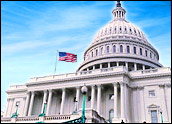

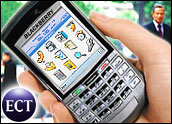

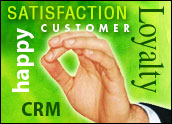
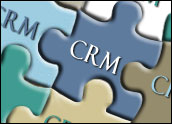
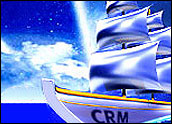

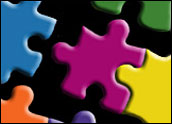


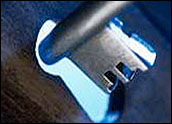


































Social CRM
See all Social CRM